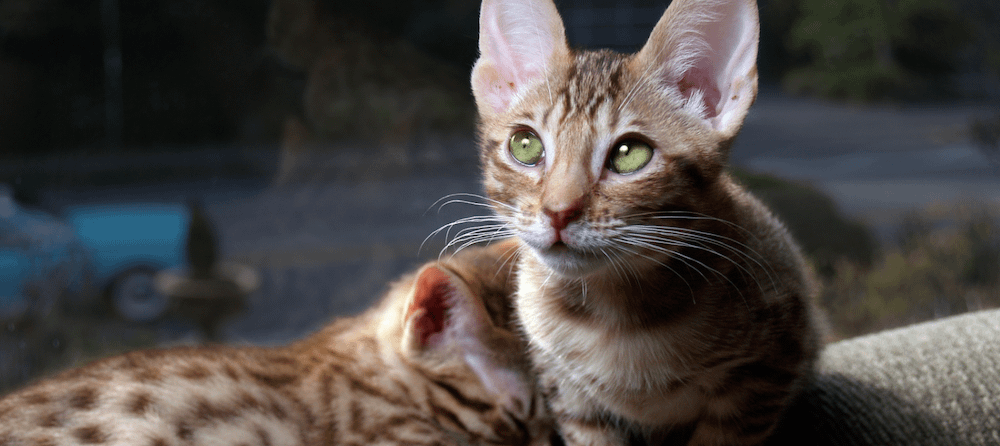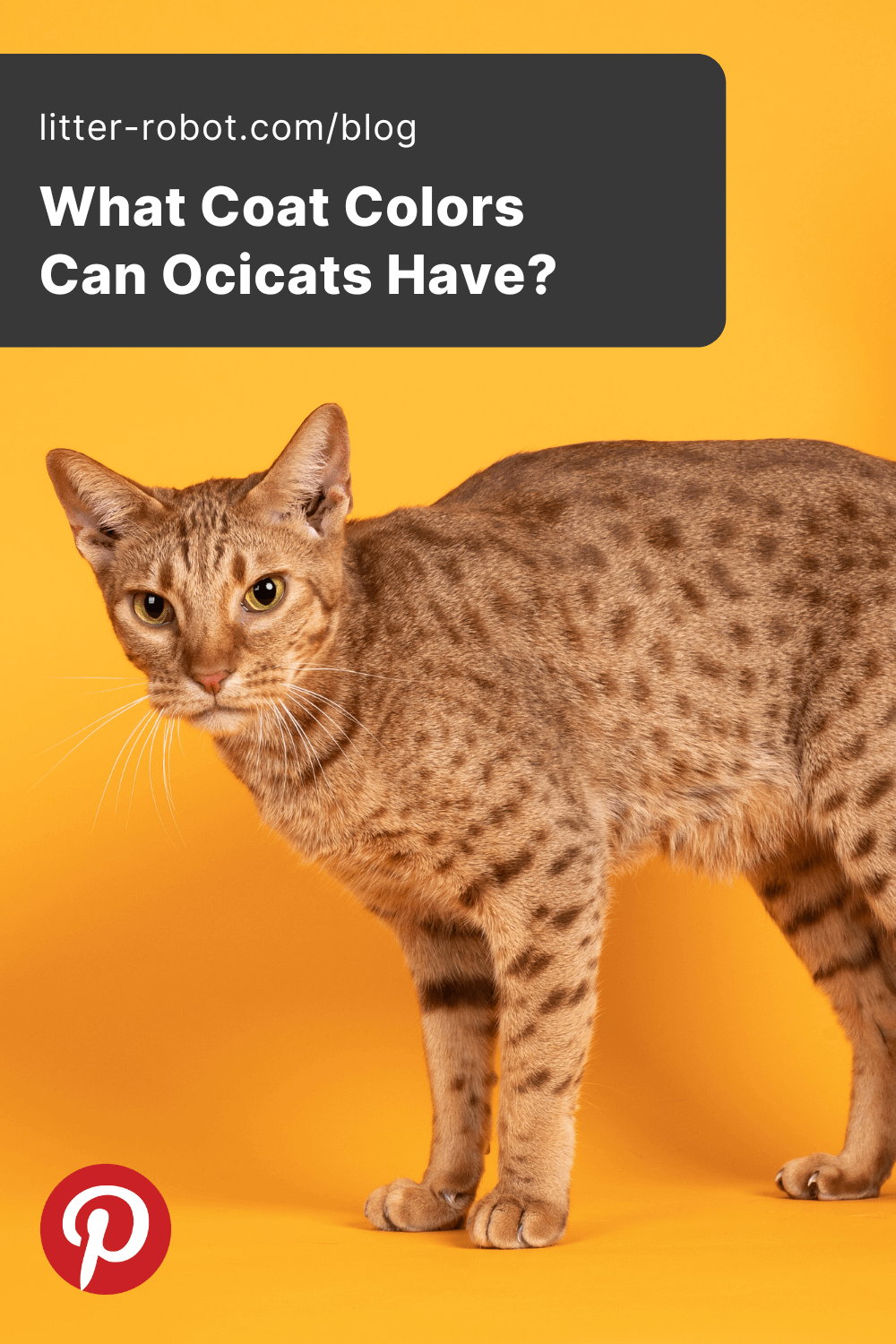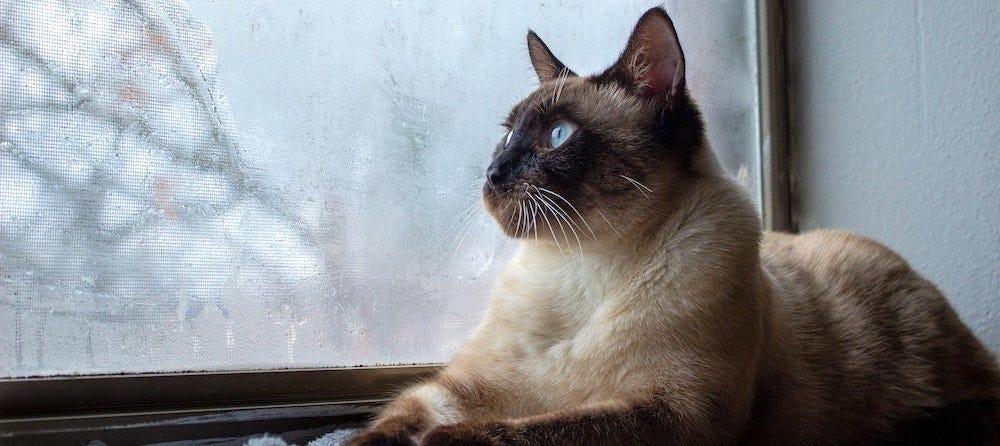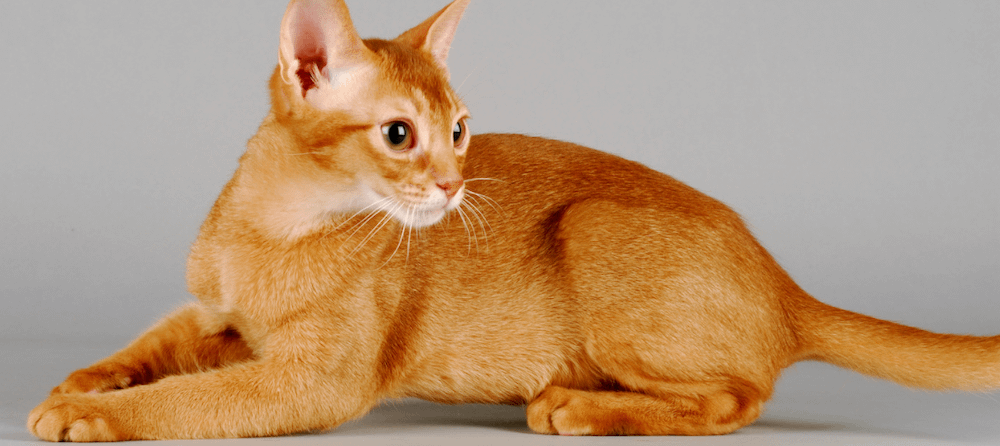No, you’re not going crazy: There is definitely a mini wild cat living in your house. Just kidding, of course! That’s simply the Ocicat.
This breed was created to look like a descendent of a wild cat, but they are very much domesticated. They behave just like any other kitty, with the added bonus of an stunningly exotic look.
Not many people you come across will have an Ocicat; if you’re lucky enough to have one, just know that you’re the cool friend. They are very friendly cats that want you to play and interact with them throughout the day. If this breed isn't given enough attention, they can become sad and lonely.
Ocicats come in a variety of colors. If you’re trying to figure out what color your Ocicat is, don’t be surprised when we tell you there are quite a few to choose from.
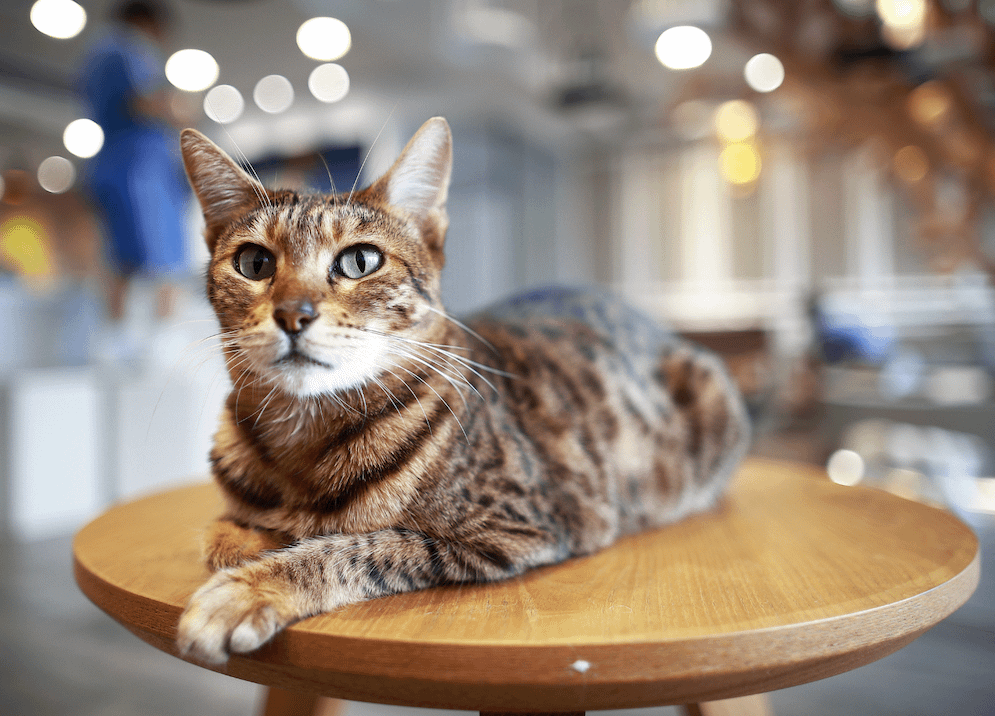
History of the Ocicat
The birth of the Ocicat was actually an accident. A woman named Virginia Daly was experimenting with Siamese and Abyssinian cat litters, having wanted to create a litter with kittens that would resemble a Siamese but with the markings of the Abyssinian. Eventually, an ivory kitten with golden spots was born. She named him Tonga.
But Tonga wasn’t what Virginia had envisioned, so she passed him off, neutered, to a loving family. Geneticist Dr. Clyde Keeler was intrigued by this golden spotted kitten and asked her if she would breed the same cat for him. She gave Dr. Keeler a tawny spotted male that was then bred with an American Shorthair. The result of this pairing was the Ocicat.
As different-colored American Shorthairs were introduced into the breeding process, different-colored Ocicats began being born. These cats looked wild but acted extremely playful and loving. It confused many, yet intrigued most. The Ocicat became a sought-after breed with devoted followers.
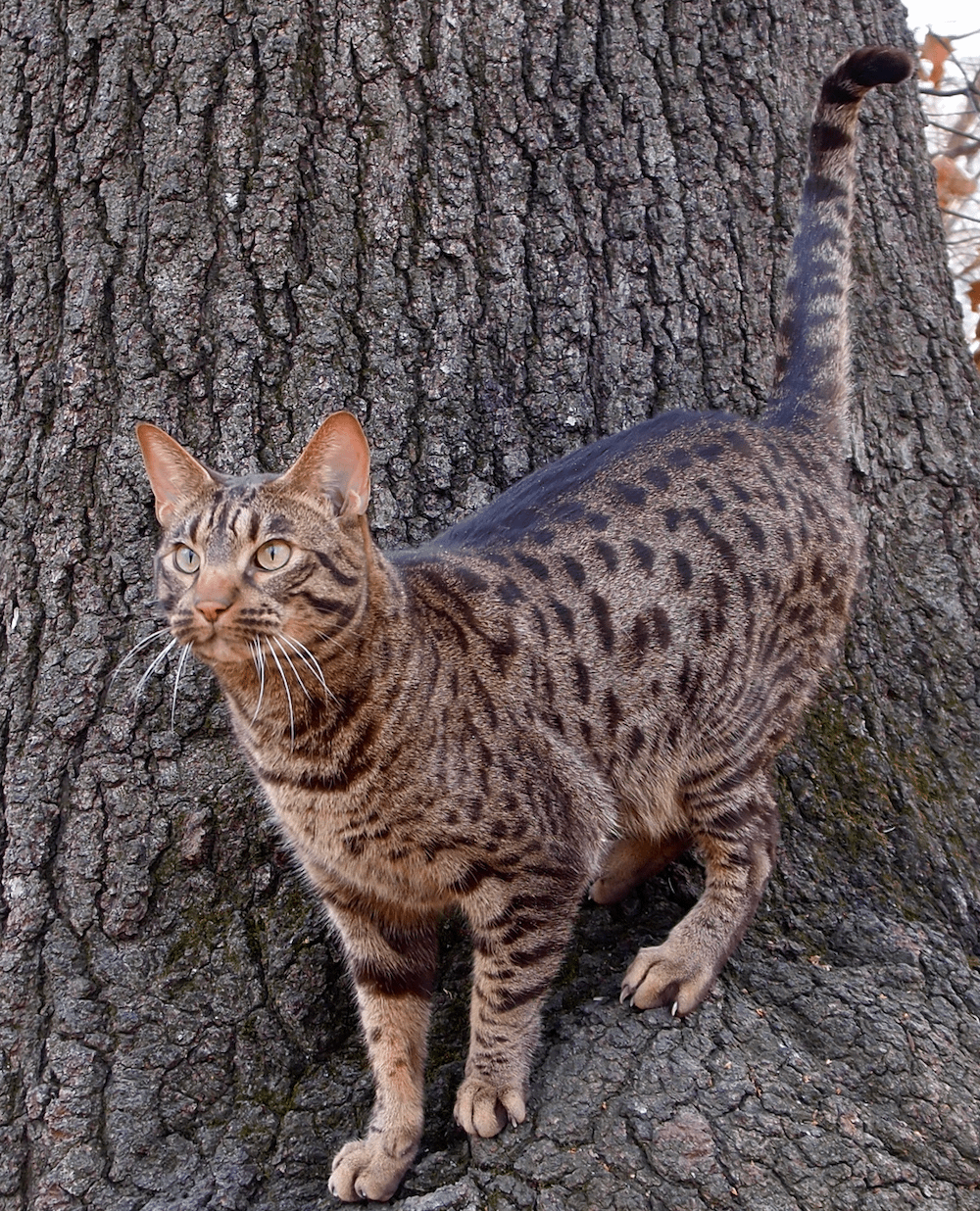
What does an Ocicat look like?
An Ocicat looks like a miniature wild cat, with their defined spots and markings. They are medium to large in size and have a muscular build. They are compact creatures, but because of their high activity levels, they maintain their weight well.
The most notable characteristic of the Ocicat is, in fact, their coats. Their coats are short and satin-like, with a sheen that glimmers in the sun. Their spots cover their entire bodies, traveling down their legs and tails as well.

What colors do Ocicats come in?
There are 12 recognized colors that an Ocicat can display. Each color is beautiful and unique. No matter what color your Ocicat is, you’ll fall in love with them immediately.
There are different classes that an Ocicat might fall under: Chocolate Class, Dilute Class, Cinnamon Class, Silver Class, and Tawny Class.
Chocolate
Chocolate-colored Ocicats have deep brown spots across a beige base color. This base color can come across as lighter or darker, but that’s completely random and due to genetics. These Ocicats often have dark red noses with hints of dark brown and chocolate-pink paw pads. The tips of their tails might seem like the darkest parts of their bodies, appearing as a rich chocolate color.
In some lighting, these cats might seem all brown, but when the sunlight hits just right, their spots become more defined and beautiful. Unsurprisingly, these cats fall under the Chocolate Class.
Chocolate-silver
Chocolate-silver Ocicats are a dreamy sight. They have chocolate-colored spots across a white, almost silvery body. These two colors contrast nicely against each other and help the spots stand out. These cats fall into the Silver Class.
These cats will have pink noses with a dark brown outline, chocolate-pink paw pads, and a chocolate-tipped tail (sadly, not literally tipped in chocolate).
Blue
Blue Ocicats are a part of the Dilute Class of Ocicats. Their base color will be a blue or pale brownish color with blue spots scattered across the body. Only the dilution gene could turn a would-be black cat into a blue-coated one.
These blue-tinted cats will have nose leather that is pink lined with blue. Their paw pads and tail tips are blue as well. When these sweet cats stroll through a sunbeam, you can see the deepness of the blue more clearly.
Blue-silver
Blue-silver Ocicats fall into the Silver Class. In this cat, the base color will come across as white or silver. Contrasted against the blue spots, these blue-silver beauties will really stand out. Their noses will be pink and lined with dark blue, and they’ll have blue paw pads and a blue tail tip. If you think you saw a Snow Leopard indoors, look again! It’s actually the blue-silver Ocicat.
Cinnamon
Cinnamon Ocicats are part of the Cinnamon Class and have a very warm beige base coat with deeper beige (cinnamon) spots on top. The contrast is still distinct, even though the two colors are very similar.
Cinnamon Ocicats will have pink or dark pink paw pads, and their noses will be pink and lined with a cinnamon color. The tips of their tails should be a darker cinnamon color, and they will have golden eyes.
These kitties might resemble a red tabby to some ardent cat lovers.
Cinnamon-silver
Cinnamon-silver Ocicats have a much more distinct coloring than the cinnamon Ocicat. These fall into the Silver Class due to their white and silver background. They have cinnamon-colored spots across their bodies that give great contrast to their coloring as a whole.
These adorable felines have pink noses lined with cinnamon and a tail tip with a rich cinnamon color. Their paw pads will range from light to dark pink.
Fawn
Fawn Ocicats fall under the Dilute Class. This is because the fawn Ocicat is basically a diluted version of the cinnamon Ocicat. These cats will have fawn-colored spots across a beige base color. The contrast might be slight but is still noticeable. Fawn Ocicats tend to have a very soft look to them, probably due to the dilution.
Fawn Ocicats have pink noses lined by a fawn color, pink paw pads, and a fawn tail tip.
Fawn-silver
Another Ocicat that falls into the Silver Class, the fawn-silver Ocicat has a much more distinct difference between their base coat and spots. Even though they are still very light in coloring, their silvery-white base coat contrasts nicely with the fawn spots.
Their noses are pink, lined with a fawn color, as well as their paw pads. Their tail tip is fawn, too.
Lavender
Lavender Ocicats fall under the Dilute Class because this is technically a dilution of the chocolate color. This dilution of the chocolate color results in a soft purple tint, which is called lavender. It is truly stunning.
These Ocicats have lavender spots on a pale ivory base coat. Their noses will be pink but lined with dark lavender, their paw pads are lavender pink, and they have a lavender tail tip.
Lavender-silver
A part of the Silver Class, lavender-silver Ocicats are a striking color. They have lavender spots on a silvery background.
Their noses are pink, lined with dark lavender, and they have lavender-pink paw pads and a lavender tail tip. They are very similar to the lavender Ocicat, but when the light hits right, it becomes much clearer that lavender-silver is the actual coat.
Ebony-silver
Ebony-silver Ocicats have black spots against a white or silver background. These look similar to blue-silver Ocicats, but the spots are darker and deeper.
The nose of an ebony-silver Ocicat will be dark red and lined with black, and they have black paw pads and a black tail tip. The contrast between this Ocicat's spots and base coat is very prominent.
Tawny
Tawny Ocicats are their own class of Ocicat, resembling a brown spotted tabby cat. In the case of a tawny Ocicat, there will be black or brown spots on a beige background. The nose will be dark red and lined with black, and they’ll have a black tail tip with either black or dark brown paw pads.
These cats may look like a typical tabby, but their spots help to distinguish them from other cat breeds.
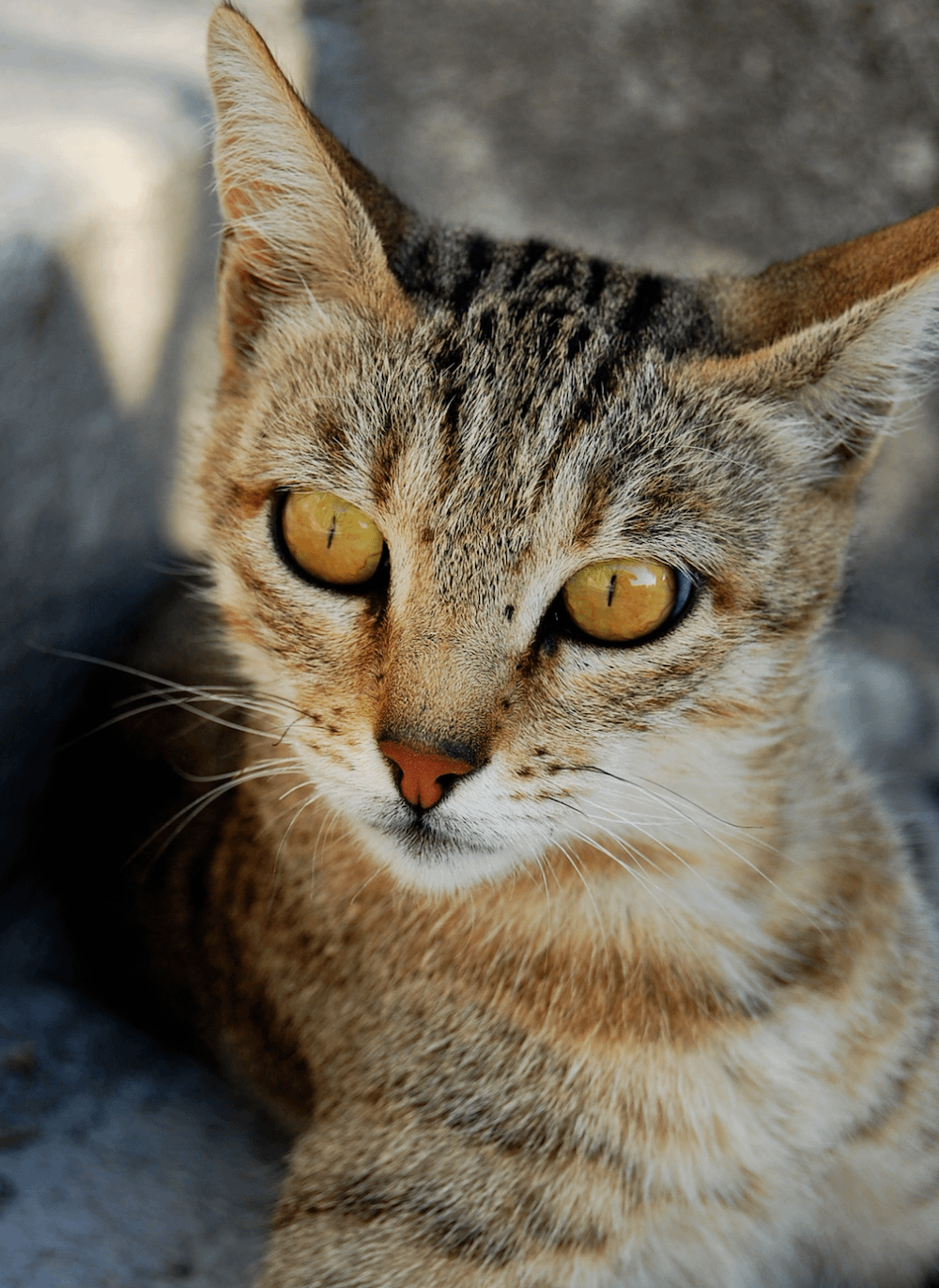
Loving an Ocicat
Ocicats need a space where they can play, run around, eat healthy meals, get loved on, and stay happy. They want to feel accepted and loved by their humans, and their favorite activity is spending time with them. They will shower you with affection and attention as long as they feel wanted.
To give back to your Ocicat, make sure you are loading the house up with cat toys and cat furniture, such as cat trees, cat shelves, and scratching posts. They need to be mentally stimulated and love a good game. You’ll want to make sure they’re properly groomed and have a clean litter box (made easy with the help of a self-cleaning litter box like Litter-Robot!).
You’ll find that the more you do for your Ocicat, the more love and devotion you’ll receive!
Sources:
